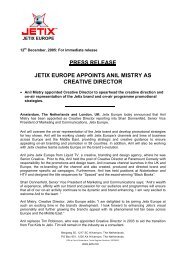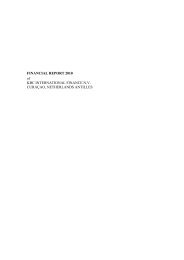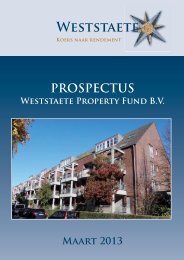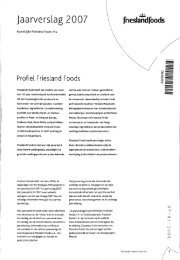Pallet-Management-Services - AFM
Pallet-Management-Services - AFM
Pallet-Management-Services - AFM
You also want an ePaper? Increase the reach of your titles
YUMPU automatically turns print PDFs into web optimized ePapers that Google loves.
market equity risk premiums and estimated risk premiums in relationship with the actual rating of<br />
the companies shares. The beta factor used also reflected the actual bond rating of IFCO<br />
SYSTEMS.<br />
The Company’s 2006 and 2005 annual testing indicated that there was no impairment of<br />
investments.<br />
Accounts receivables<br />
Trade receivables are recorded at amortized costs or the amount the Company expects to<br />
collect on gross customer trade receivables. A reserve has been established based on historical<br />
experience, in addition to a reserve for specific receivables which may not be fully collectible.<br />
Items deemed uncollectible are written off against allowance for doubtful accounts.<br />
Investments and other financial assets and liabilities<br />
Financial assets within the scope of IAS 39 are classified as either financial assets at fair value<br />
through profit or loss, loans and receivables, held to maturity investments, and available for sale<br />
investments, as appropriate. When financial assets are recognized initially, they are measured at<br />
fair value, plus, in the case of investments not at fair value through profit or loss, directly<br />
attributable transaction cost. The Company considers whether a contract contains an embedded<br />
derivative when the entity first becomes a party to it. The embedded derivatives are separated<br />
from the host contract which is not measured at fair value through profit and loss when the<br />
analysis shows that the economic characteristics and risk of embedded derivatives are not<br />
closely related to those of the host contract.<br />
The Company determines the classification of its financial assets after initial recognition and,<br />
where allowed and appropriate, re-evaluates the designation at each financial year end.<br />
All regular way purchases and sales of financial assets are recognized on the trade date, which<br />
is the date the Company commits to purchase the asset. Regular way purchases or sales are<br />
purchases or sales of financial assets that require delivery of assets within the period generally<br />
established by regulation or convention in the market place.<br />
Initial recognition and measurement<br />
Financial assets consist with the exception of derivatives only of loans and receivables. Loans<br />
and receivables are non-derivative financial assets with fixed or determinable payments that are<br />
not quoted in an active market. After initial measurement loans and receivables are<br />
subsequently carried at amortized cost using the effective interest method less any allowance for<br />
impairment. Gains and losses are recognized in income when the loans and receivables are<br />
derecognized or impaired, as well as through the amortization process<br />
Financial liabilities are initially recognized at the fair value of the consideration received less<br />
directly attributable costs. After initial recognition, they are subsequently measured at amortized<br />
cost using the effective interest method. Gains and losses are recognized in net profit or loss<br />
when the liabilities are derecognized as well as through the amortization process.<br />
36



